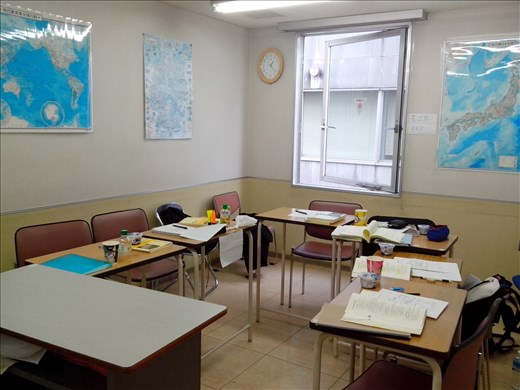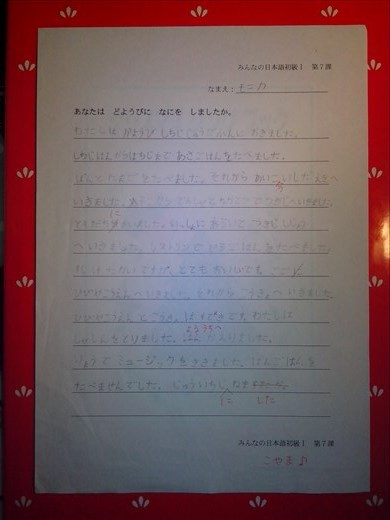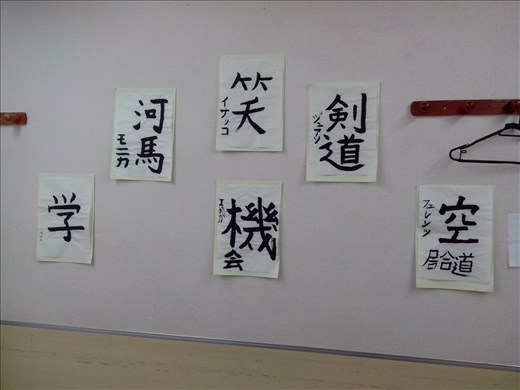After my Abitur I said: "I'm never going back to school". Well, I did. But although we had compulsory attendance, homework and both written and oral tests, it was slightly different from my German school...
First of all, my class consisted of 6 (at the beginning 7) pupils. Therefore it was quite intensive and everyone had the chance to actually talk a lot in every lesson. The topics were from our daily life - what did we eat for lunch, what did we do on the weekend, what are our future plans, ... I guess my class mates know me very well now, because of all this talking.

Which leads me to point 2: The language of instruction obviously was - beginning from day one - Japanese. English (let alone German) wasn't used, unless it was really necessary. The teachers always found a way to "explain" the meaning of what they were saying by "acting". They always knew exactly which words and grammar we already had studied and somehow managed to explain everything using only sentences we could understand. On the other hand, they seemed to memorise every single detail we said during class, and after one small break all the other teachers knew these details as well.
Number 3: The timetable consisted of only one subject:
|
1.
|
9:00 - 9:45
|
Japanese
|
|
2.
|
9:55 - 10:40
|
Japanese
|
|
3.
|
10:50 - 11:35
|
Japanese
|
|
4.
|
11:45 - 12:30
|
Japanese
|
|
|
12:30 - 13:30
|
Lunch break
|
|
5.
|
13:30 - 14:15
|
Japanese
|
|
6.
|
14:25 - 15:10
|
Japanese
|
|
7.
|
15:20 - 16:05
|
Japanese
|
But actually in every lesson the focus was different. For example, the first lesson was always used for recapitulation of the previous day, the fourth was usually a small dictation test, new Kanji and listening comprehension.
Usually school was over after the 5th or 6th lesson, but occasionally up to the 7th, followed by studying vocabulary and grammar and doing the homework. The speed was high - typically one lesson of the book per day - and after only about two weeks we had to write the first small essay (about one day of a (long) weekend):

After the first few days, which were pretty difficult for me, I really started enjoying to learn Japanese. It's an interesting language, and after a while I already invented wordplays, e.g.:
いろいろな いろ が ある おかしい おかしが ほしい です。
Iroirona iro ga aru okashī okashi ga hoshī desu.
I'd like to have colorful, funny (strange) sweets.
Each day we learned new grammar, each day I realised, how much more I can express with the new grammar (usually without noticing, how much is still missing), and each day it became easier to understand and memorise the new grammar. Japanese isn't as difficult as you might think (except for Kanji...)!
Besides the classes we sometimes had other special activities. In the first weeks EU Japan Center organised seminars (about the Japanese history, culture, religion, economy, etc.) every now and then.
On one afternoon we could try書道 (Shodō = Calligraphy), which was surprisingly difficult, but at the same time relaxing and of course very interesting. Here you can see the results of my class, 風クラス (風 = kaze = wind, クラス = class):

Bonus: Who can answer the following questions?
a) Which one is mine?
b) What did I write?
The first person who can answer both questions correctly will get a postcard. Those who I already told, are excluded, sorry...
いじょう です。